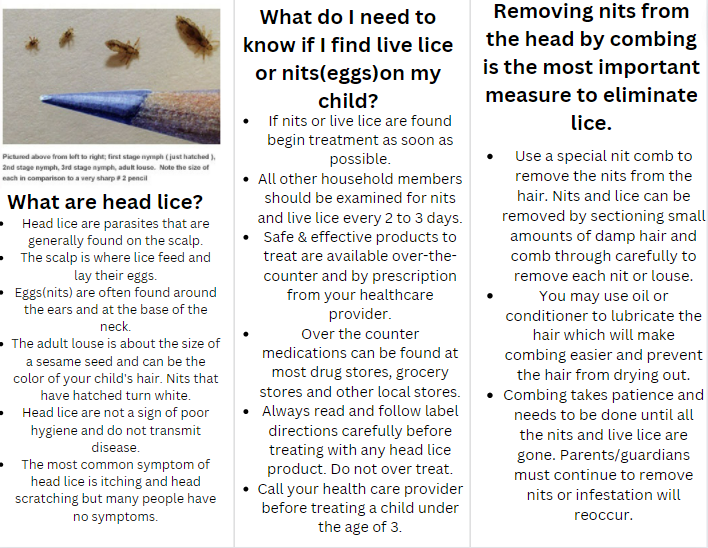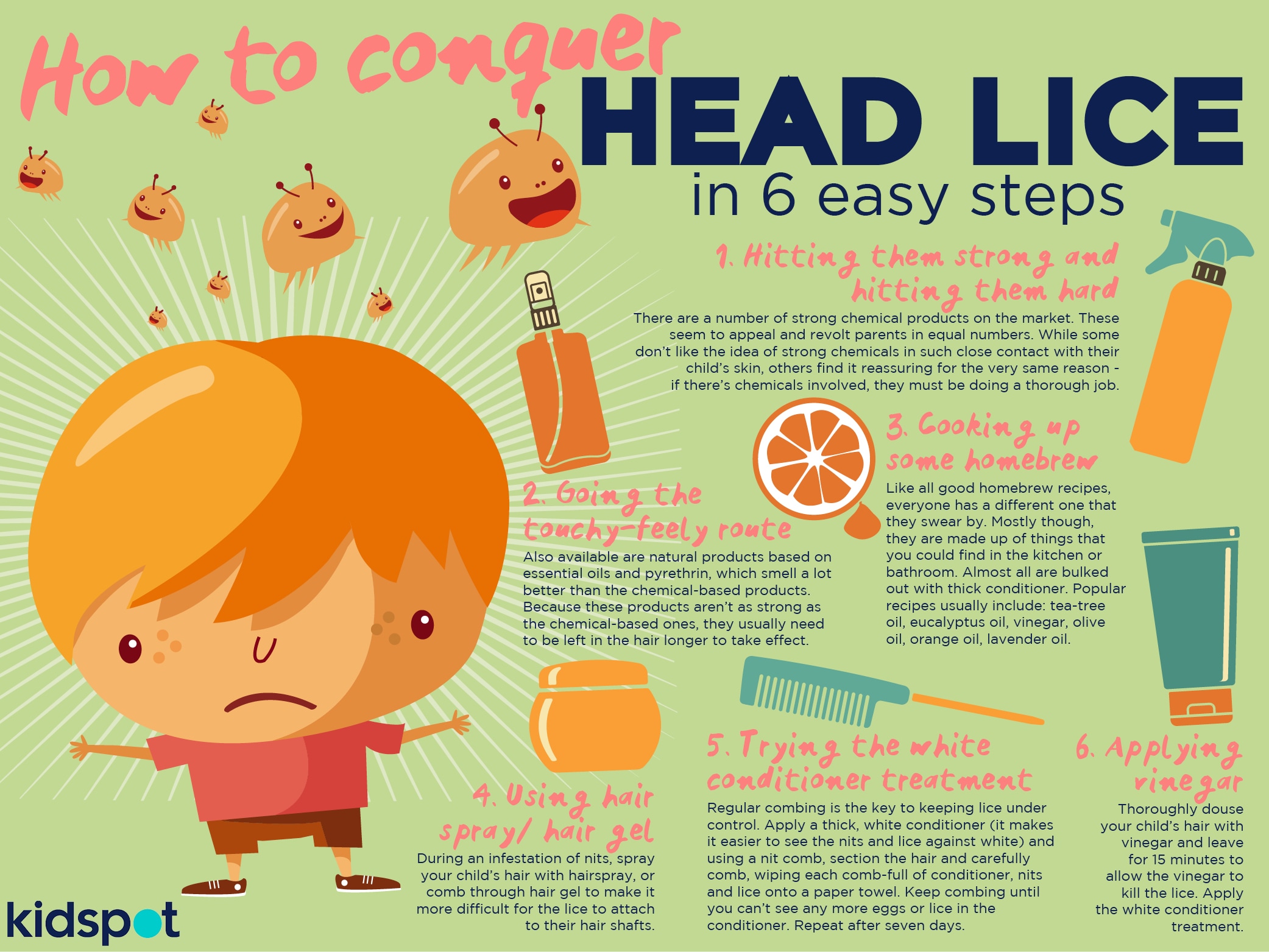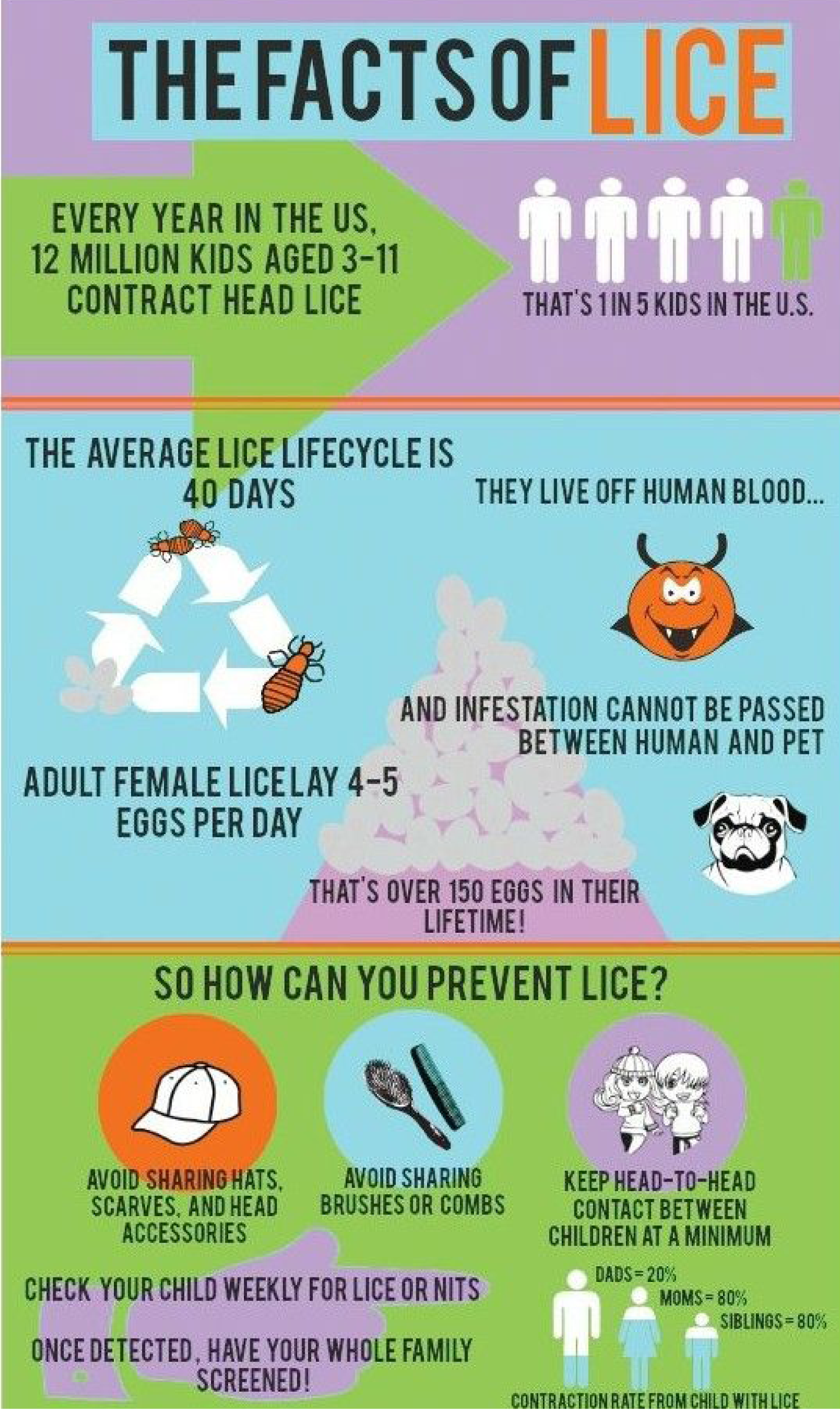Lice Brochure
Lice Brochure - ♦ distribution of educational material to school staff and parents on head lice, nit combing, and treatment such as “a parent’s guide to head lice” brochure (available at local health. Look for lice crawling on the scalp where the hair is parted or on the hair shaft. Head lice cause itchiness of the scalp,. Look for lice crawling on the scalp where the hair is parted or on the hair shaft. There are millions of cases of lice each year in the united states, mostly among children ages 3 to 11. Head lice are found worldwide and anyone who has direct contact with the hair of an infested person or shares a comb, brush, or hat with an infested person can get head lice. Click the download button to view what to do if my child gets head lice brochure. There is a very small chance that head lice will. It can be hard work to get rid of them. What do head lice look like? There are millions of cases of lice each year in the united states, mostly among children ages 3 to 11. Children are more likely to get lice from family members and playmates than from classmates at school. Lice move by crawling, they cannot hop or fly. Look for nits near hair follicle about ¼ inch from. Head lice are a problem in homes, day care centers, elementary, and preschools. The lice will be dark in color and the size of a poppyseed. What do head lice look like? It can be hard work to get rid of them. Differences between the 3 types of lice: Head lice (or pediculosis humanus capitis) are anyone can get head lice! Head lice develop in three forms: ♦ distribution of educational material to school staff and parents on head lice, nit combing, and treatment such as “a parent’s guide to head lice” brochure (available at local health. Look for nits near hair follicle about ¼ inch from. Head lice are parasites that are generally found on the head, eyebrows or eyelashes. What do head lice look like? Head lice is a parasitic infestation of bugs found on the head/scalp of people. Head lice are a problem in homes, day care centers, elementary, and preschools. Head lice are crawling insects. • head lice are very common among all classes of people. Differences between the 3 types of lice: Children are more likely to get lice from family members and playmates than from classmates at school. Anyone with clean or dirty hair can get head lice. The lice will be dark in color and the size of a poppyseed. Head lice are a problem in homes, day care centers, elementary, and preschools. There is a very small chance that head lice will. Lice move by crawling, they cannot hop or fly. Head lice (or pediculosis humanus capitis) are anyone can get head lice! Head lice are a problem in homes, day care centers, elementary, and preschools. ♦ distribution of educational material to school staff and parents on head lice, nit combing, and. It can be hard work to get rid of them. ♦ distribution of educational material to school staff and parents on head lice, nit combing, and treatment such as “a parent’s guide to head lice” brochure (available at local health. Look for nits near hair follicle about ¼ inch from. Lice move by crawling, they cannot hop or fly. Eggs. They cannot jump, hop, or fly. The lice will be dark in color and the size of a poppyseed. Head lice infestation is diagnosed by looking closely through the hair and scalp for nits, nymphs, or adult lice. Look for nits near hair follicle about ¼ inch from. Lice don’t jump or fly, but they are fast. Head lice are small insects that live in people’s hair and feed on their blood. It can be hard work to get rid of them. Lice don’t jump or fly, but they are fast. What do head lice look like? Head lice are parasites that are generally found on the head, eyebrows or eyelashes of individuals. Head lice is a parasitic infestation of bugs found on the head/scalp of people. There is a very small chance that head lice will. Look for nits near hair follicle about ¼ inch from. Head lice do not jump, fly, or hop. ♦ distribution of educational material to school staff and parents on head lice, nit combing, and treatment such. Children are more likely to get lice from family members and playmates than from classmates at school. Lice move by crawling, they cannot hop or fly. Look for nits near hair follicle about ¼ inch from. Head lice are not known to spread disease and are not dangerous. Head lice are a problem in homes, day care centers, elementary, and. Look for lice crawling on the scalp where the hair is parted or on the hair shaft. The eggs (nits), larvae, or adult lice are visible if present on the head or body. Head lice infestation is diagnosed by looking closely through the hair and scalp for nits, nymphs, or adult lice. Lice move by crawling, they cannot hop or. Head lice cause itchiness of the scalp,. Head lice are parasites that are generally found on the head, eyebrows or eyelashes of individuals. You may see different stages of head lice when checking your child: Look for nits near hair follicle about ¼ inch from. Children are more likely to get lice from family members and playmates than from classmates at school. There are millions of cases of lice each year in the united states, mostly among children ages 3 to 11. • head lice are very common among all classes of people. Click the download button to view what to do if my child gets head lice brochure. Look for nits near hair follicle about ¼ inch from. Head lice are not known to spread disease and are not dangerous. They cannot jump, hop, or fly. The lice will be dark in color and the size of a poppyseed. Eggs and empty egg shells (nits), baby lice (nymphs), and adult lice. There is a very small chance that head lice will. Anyone with clean or dirty hair can get head lice. Head lice are crawling insects.St. Rose Falcons Information Station
lice pamphlet
Head Lice What Parents Need to Know Kimball Public Schools
All About Head Lice How To Keep The Critters Away From Kids' Scalps
Lice Miss Jenny's Class
(PDF) HEAD LICE RESOURCES Head Lice Mead School District Services
Head Lice
Head Lice 101 A Parents Guide with Tips, Facts, and Information (pdf)
The Facts of Lice Brooklyn Friends School
VectorBorne Disease Educational Materials
The Eggs (Nits), Larvae, Or Adult Lice Are Visible If Present On The Head Or Body.
Lice Move By Crawling, They Cannot Hop Or Fly.
It Can Be Hard Work To Get Rid Of Them.
Lice Don’t Jump Or Fly, But They Are Fast.
Related Post:








